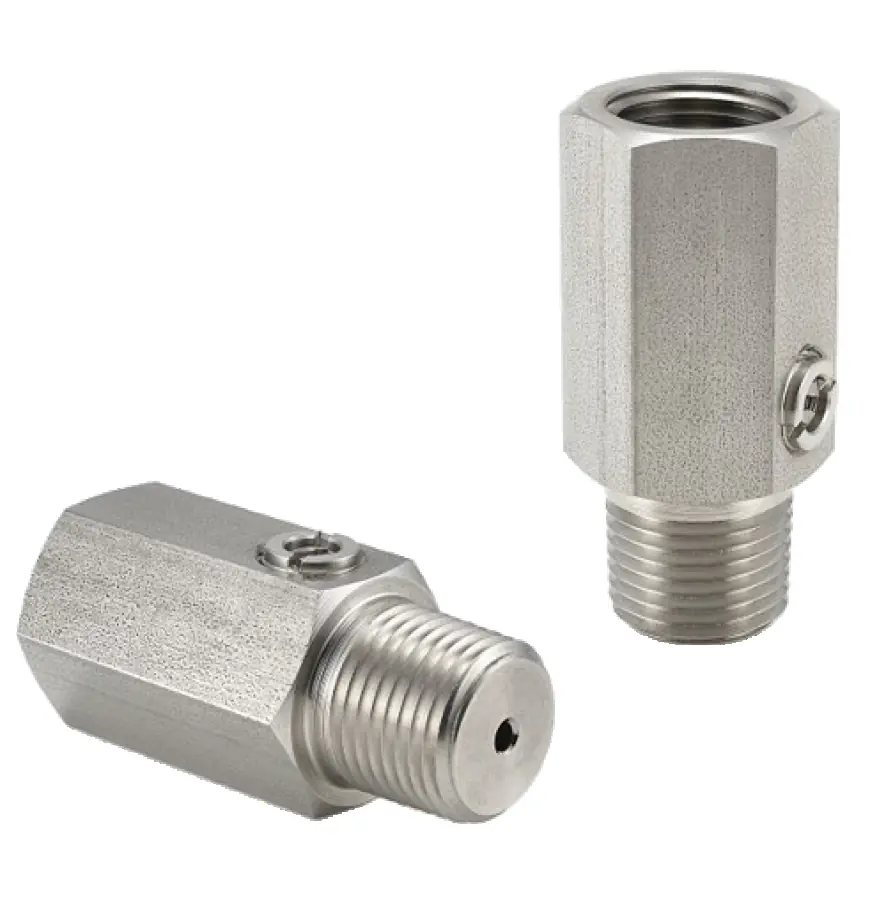How to Choose the Right Snubber for Your System

When working with systems that measure pressure, accuracy and safety are very important. In many cases, sudden spikes or fluctuations in pressure can damage sensitive instruments like gauges, transmitters, and switches. To solve this problem, a device called a pressure gauge snubber is used. It protects instruments from sudden shocks and vibrations by controlling the flow of pressure into the measuring device.
But choosing the right snubber is not always simple. Different applications require different types of snubbers, and selecting the wrong one can reduce efficiency or even cause failure. This blog will guide you step by step on how to choose the right snubber for your system in an easy and clear way.
What is a Pressure Gauge Snubber?
A pressure gauge snubber is a small device that is installed between the pressure source and the measuring instrument. Its main job is to dampen or reduce sudden pressure pulses, shocks, or fluctuations. Without a snubber, a pressure gauge may show unstable readings, wear out quickly, or even break due to repeated stress.
By using a pressure gauge snubber, you can:
-
Protect instruments from damage.
-
Ensure more accurate and stable readings.
-
Extend the life of gauges and transmitters.
-
Reduce maintenance and replacement costs.
Why Choosing the Right Snubber Matters
Every system is different. Some deal with gases, while others deal with liquids. Some systems face slow and steady pressure, while others face rapid and extreme fluctuations. The right snubber ensures that the instrument works smoothly in its environment.
If the wrong type is chosen, it may:
-
Block the flow too much and slow down response time.
-
Fail to protect instruments against high shocks.
-
Wear out faster in corrosive or harsh conditions.
That’s why selecting the correct pressure gauge snubber is so important.
Key Factors to Consider When Selecting a Snubber
Here are the main things to keep in mind while choosing the right snubber for your system:
1. Type of Fluid in the System
The first step is to identify the fluid you are working with. It could be water, oil, gas, or steam. The type of fluid decides what material and design of snubber you need.
-
For water or steam, you may need a snubber that resists heat and pressure.
-
For gas or air, a snubber with fine control over pulses works better.
-
For corrosive liquids, stainless steel or special alloys may be necessary.
2. Operating Pressure and Fluctuations
Understand the normal operating pressure as well as the pressure spikes. If your system experiences rapid and strong spikes, you need a snubber with high damping ability. On the other hand, if the system has mild fluctuations, a lighter snubber will be enough.
3. Material of Construction
The material of the snubber should match the environment of the system. Common materials include:
-
Brass – Good for non-corrosive fluids and general use.
-
Stainless Steel – Suitable for corrosive environments and higher durability.
-
Special Alloys – Used in very harsh or chemical-heavy conditions.
Choosing the wrong material can lead to corrosion, leakage, or short life.
4. Type of Snubber Design
Snubbers are available in different designs. Some common types are:
-
Porous Disc Snubber – Uses a disc with small pores to control pressure flow. Best for gases and light fluids.
-
Piston Snubber – Uses a piston to dampen shocks. Ideal for heavy pulsations.
-
Adjustable Snubber – Lets you adjust the damping level depending on the system requirement. Useful when conditions change often.
5. Temperature Range
If the system operates at very high or very low temperatures, make sure the snubber can handle it. A pressure gauge snubber that is not rated for extreme temperatures may fail and put your instruments at risk.
6. Maintenance Needs
Some snubbers require cleaning and maintenance, especially in dirty or dusty fluids. If your system does not allow frequent maintenance, choose a snubber with self-cleaning features or long-lasting design.
Steps to Choose the Right Snubber
Here’s a simple step-by-step guide:
-
Check your system fluid – Is it gas, water, oil, or something else?
-
Identify normal and maximum pressure – Know how high the spikes can go.
-
Select the right material – Choose brass, stainless steel, or another material depending on the fluid.
-
Pick the right design – Porous disc, piston, or adjustable, based on the type of pulsation.
-
Check temperature ratings – Ensure the snubber works under your system’s conditions.
-
Plan for maintenance – If your system is hard to maintain, pick a design that lasts longer without cleaning.
Common Mistakes to Avoid
While selecting a snubber, many people make mistakes that reduce system efficiency. Here are some to avoid:
-
Choosing based on cost only – The cheapest option may not last long and can lead to bigger losses.
-
Ignoring fluid compatibility – Using brass in a corrosive system, for example, will cause early failure.
-
Not considering temperature – A snubber must be suitable for hot steam or cold gases if that’s what your system handles.
-
Skipping proper sizing – A snubber must fit the pressure range of your system.
Benefits of Using the Right Snubber
When you choose the correct pressure gauge snubber, you can expect many advantages:
-
Accurate readings for better decisions.
-
Longer life of gauges and instruments.
-
Lower maintenance and replacement costs.
-
Safer operations, even in high-pressure environments.
-
Smooth and stable performance of the system.
Final Thoughts
A pressure gauge snubber may look like a small device, but it plays a big role in protecting your system. Choosing the right one depends on the fluid, pressure range, material, design, and temperature of your application. By understanding your system’s needs and selecting carefully, you can ensure accurate readings, longer instrument life, and safer operations.
What's Your Reaction?
 Like
0
Like
0
 Dislike
0
Dislike
0
 Love
0
Love
0
 Funny
0
Funny
0
 Angry
0
Angry
0
 Sad
0
Sad
0
 Wow
0
Wow
0

















































